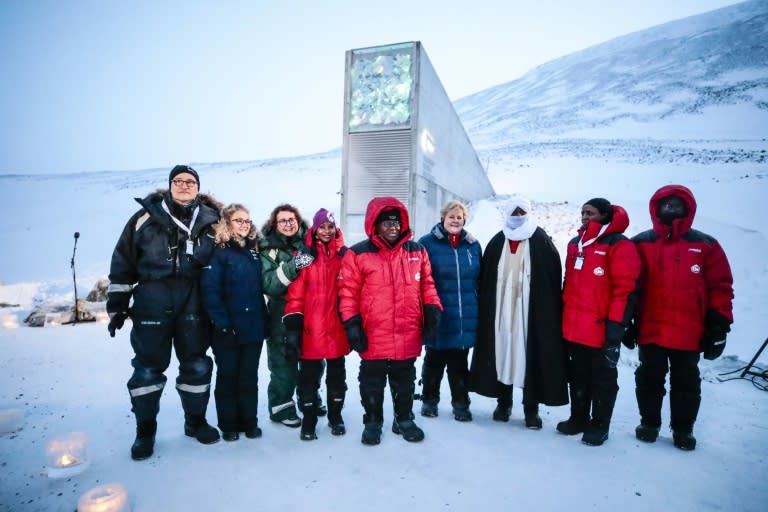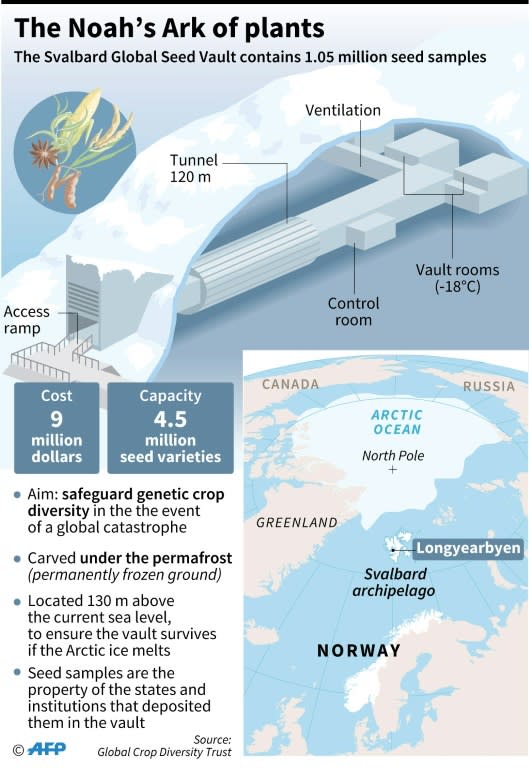UPDATED: Body cam captures
6-year-old's tearful pleas during arrest
ORLANDO, Fla. (AP) — A police officer's body camera shows a 6-year-old Florida girl crying and begging officers not to arrest her as one fastens zip ties around her wrists at a charter school.
The video that Kaia Rolle's family shared with the Orlando Sentinel and other media outlets Monday shows the girl being arrested in September for kicking and punching staff members at her Orlando charter school.
“What are those for?” Kaia asks about the zip ties in the video.
“They’re for you,” Officer Dennis Turner says before another officer tightens them around her wrists and Kaia begins weeping.
Turner
was fired shortly after the arrest. Orlando Police Chief Orlando Rolon said at the time that Turner, a reserve officer, didn't follow department policy of getting the approval of a watch commander to arrest someone younger than 12.
“Help me. Help me, please!” Kaia pleads through tears.
As she is being walked to the vehicle, she cries, “I don’t want to go in a police car.”
The second officer, who has not been identified, responds, “You don’t want to? ... You have to.”
“Please, give me a second chance,” Kaia says.
The video shows the officer lifting the sobbing girl into the back seat of the police vehicle and putting a seat belt around her.
A short time later, Turner returns to the office to talk to Lucious & Emma Nixon Academy administrators, who appear dismayed by what they have witnessed in the school office.
The officer tells them that the juvenile detention center where Kaia was headed is “not like you think.” Turner tells the administrators he has made 6,000 arrests, including a 7-year-old.
When school employees tell the officer that Kaia is 6, not 8 like he thought, he replies, “Now she has broken the record."
Turner had worked in the police agency's reserve unit, which is mostly made up of retired officers who pick up extra-duty jobs for pay. Because he was a reserve officer, he was not a member of the collective bargaining unit, and the police union didn't represent him, Shawn Dunlap of the Fraternal Order of Police Orlando Lodge 25, said in an email Tuesday.
School resource officers came under close scrutiny in Florida after former Broward Deputy Scot Peterson failed to engage a shooter at a Parkland high school in 2018. He was charged last year with child neglect, culpable negligence and perjury. That case is ongoing.
The Orlando case drew yet more attention to the role of police in schools.
Jeff Kaye, president of California-based School Safety Operations Inc., said in an email that the officer would not only have been fired in some other states but possibly charged with a crime, such as oppression under color of authority.
School administrators might have been better served by contacting the child's parents and working with a counselor, rather than calling police, Kaye said.
“As long as everyone is safe, take a deep breath, slow things down, and make good commonsense decisions," Kaye said. “I can't think of any reason to ever arrest a 6-year-old child, but I say that based on my training and experience and not that of others."
Kaye said he's had several several school districts contact him since the video's release saying they want to re-examine their school resource officer programs, because they don't want something similar to happen in their schools.
Officials have said that Turner also arrested a 6-year-old boy at another school on the same day as Kaia's arrest for misdemeanor battery in an unrelated incident. However, the boy’s arrest was halted by superiors before the child made it through the full arrest process.
State Attorney Aramis Ayala said last September that she was dismissing misdemeanor battery charges against both children.

Body camera video: 6-year-old girl cries for help as Florida police arrest her at school
Grace Toohey
ITS FLORIDA ITS IN THE WATER
6-year-old girl cries, begs for help during arrest at Orlando school
VIDEO Kaia Rolle was sitting, listening to a school employee read her a story when two officers came in the room to arrest her.
“What are those for?” the 6-year-old girl asked the Orlando police officers.
“They’re for you,” Officer Dennis Turner said about the zip ties, before another officer tightened them around her wrists. Kaia immediately began weeping.
“No ... no, don’t put handcuffs on!” she wailed in body camera footage from the arrest, which Kaia’s family shared with the Orlando Sentinel Monday evening. The arrests of the girl and another 6-year-old at Lucious & Emma Nixon Academy in September drew national headlines and widespread condemnation, leading to the officer’s firing.
WOULD THIS HAPPEN IN A PUBLIC ELEMENTARY SCHOOL?
THIS WAS A CHARTER SCHOOL NOT REALLY A PUBLIC SCHOOL
AND THEY HAVE A COP AS A RESOURCE OFFICER, IN AN ELEMENTARY SCHOOL
“Help me, help me, please!” the girl choked out through tears. The officers continued with the arrest. Employees at the Orlando charter school stood by.
After Kaia was placed in a police SUV to be taken to the Juvenile Assessment Center, Officer Turner returned to the school’s office and spoke to administrators, who were concerned about Kaia. He downplayed the juvenile detention center, saying it’s “not like you think.”
He told them he had arrested 6,000 people in his career — the youngest, to that point, was 7. When school employees told him Kaia was 6, not 8 like he thought, he did not seem concerned.
“Now she has broken the record,” he said.
Kaia, a first grader at charter school, had a tantrum earlier in the day where she had kicked and punched three school employees, leading to her arrest on a charge of misdemeanor battery, according to her arrest report. However, by the time Turner and another officer approached Kaia to detain, cuff and arrest her, the girl had calmed down, the video shows.
The school staff member who had been reading to her told Kaia she had to go with the officers, and that her grandmother would pick her up later.
While walking with the officer to the car, Kaia continued to cry, “I don’t wanna go in a police car.”
The second officer, who has not been identified, replied, “You don’t want to? ... You have to.”
“Please, give me a second chance,” the girl responded, still crying.
The officers put her in the backseat of the police SUV.
Turner then returned to the school’s office, reminding one employee that he will need a statement from her, and said she will likely get a subpoena. The woman agreed, though she said she was upset.
The arrest report Turner completed said that a member of the school’s faculty, Beverly Stoute, had requested to press charges against Kaia, something the school has denied. The video does not show any staff member attempting to stop the arrest, though several are obviously rattled.
“The restraints, are they necessary?” one school employee asked.
“Yes,” Turner said.
Then, he added: “If she was bigger, she would have been wearing regular handcuffs.”
He then told the school administrators that the youngest person he ever arrested previously was 7 years old, a boy who he had caught stealing at an Albertsons. He said he arrested the boy because he “thought it was a joke" while the other children caught in the act had started crying.
Officials have said that Turner also arrested a 6-year-old boy at Nixon Academy the same day as Kaia for misdemeanor battery in an unrelated incident. However, the boy’s arrest was halted by superiors before the child made it through the full arrest process.
Details about the boy’s arrest have not been made public.
The following day, prosecutors dropped the charge against Kaia.
Orlando Police Department officials have said Turner violated agency policy on arresting children younger than 12, which requires officers to get a supervisor’s approval — something Turner did not do. However, his decision was not illegal as Florida currently does not have a minimum age for arrest.
Meralyn Kirkland, Kaia’s grandmother, said she is hoping that when people watch the footage of her granddaughter’s arrest, they will support a proposal to change that law by making 12 the minimum age for arrest. She said she would also like to see school resource officers receive more training and preparation, especially to work with young children.
“I knew that what they did was wrong, but I never knew she was begging for help," Kirkland said in an interview Monday night about the video. “I watched her break.”
The body camera footage still upsets her, Kirkland said, especially when Turner “callously” talks about arresting children.
“You’re discussing traumatizing a 6- and 7-year-old — and that’s a boasting right for you?” she said. “These are babies.”
Kirkland said her granddaughter had sleep apnea, which could cause her to act out in school — a condition that Kirkland had repeatedly worked with the school to manage, she said.
Kaia was completely processed at the county Juvenile Assessment Center, where the girl’s mugshot and fingerprints were taken, Kirkland said, adding that employees at the center had to use a step stool so Kaia could reach the camera for the mugshot.
Kaia has since re-enrolled in a private school, after refusing to attend a school with an officer on campus, Kirkland said. She said she worries about how the trauma from the arrest will affect her granddaughter in years to come.
Turner, who was fired days after the arrest became national news, had worked in OPD’s Reserve Unit, which is made up of retired officers who are required to work a certain amount of hours at the agency per month and can pick up extra-duty jobs for pay.
Over the course of Turner’s 23-year tenure at OPD prior to retiring last year, he was disciplined seven times for violations of department policy that ranged from unsafe driving to a child-abuse arrest in which he was accused of injuring his 7-year-old son. He was also accused of sending threatening text messages to his ex-wife in 2009 and racial profiling, records show.















